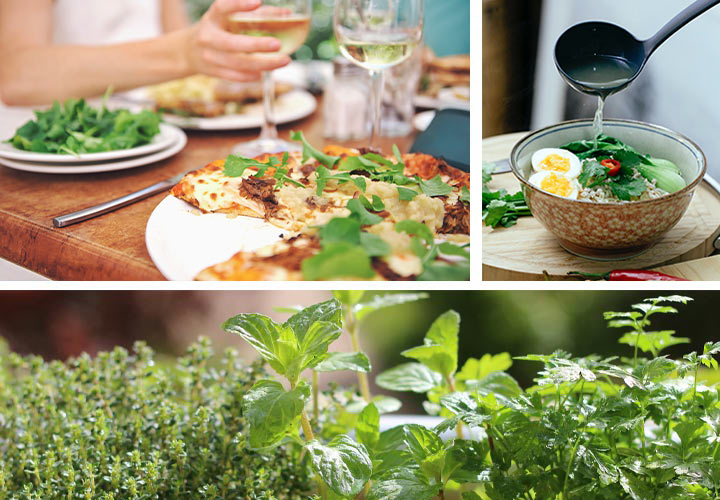Beyond basil – how to grow & use fresh herbs
Growing your own herbs is a good way to get started with productive plants and provides flavour at your fingertips for the kitchen. Herbs are easy to grow in a sunny, well-drained bed or container and can be used in many ways in the kitchen. Herbs are readily available for planting as seeds, seedlings or small pots.
Herbs are grown to harvest their leaves to use fresh or dried. Some herbs are perennial, which means they grow throughout the year, while others are annuals, which grow and die back.
To make the most of homegrown herbs, grow some you’ll use frequently and others that add distinctive flavour to special recipes. Growing a combination of both annuals and perennials provides fresh herbs year round and also adds interest to the herb garden.
Using herbs
Some herbs are used as garnishes, while others form an essential ingredient. Many can be used in either way. Basil for example is delicious in a salad, scattered over pasta or added to a tomato sandwich, but if you have a bumper crop, turn it into pesto (just add nuts such as pine nuts, walnuts or almonds, garlic, oil and parmesan cheese to the basil and blend it all together).
Rocket and parsley, two easy-to-grow productive herbs, can also be used to make pesto either substituted for basil or used in addition to basil.
Mint is another popular herb that can be used as a garnish (for example in potato salad) or in large quantities. Chopped mint combined with cracked wheat or quinoa is the basis for tabbouleh while combined with sugar and vinegar it’s homemade mint sauce. Mint can also be used in pesto.
One of the traditional herb combinations used in cooking is ‘bouquet garni’. This is a combination of herbs, usually perennial herbs such sage, bay and thyme, tied together in a bundle and added to stocks, soups and stews. The bundle is removed before the meal is served. A traditional dish that calls for a bouquet garni of herbs is Boeuf Bourguignon (Beef Burgundy).
Herbs for teas
Herbs are also used to make herbal teas. If you enjoy drinking herb teas, include a range of mints such as peppermint along with chamomile, lemon balm and lemongrass to harvest for tea making. To make your own herbal tea simply pick the fresh herbs as they are needed, rinse them well, then infuse the herbs in a pot of boiling water. Herbs can also be dried to use for tea making.
Asian herbs
The popularity of Asian cooking has lead to high demands for Asian her
bs and flavours. Many of the most popular Asian herbs can be grown in the backyard in herb gardens or containers. Top herbs used in Asian cooking include basil, Thai basil, Vietnamese mint, coriander (leaf), lemongrass, garlic chives and curry leaves.
A range of large-leafed herbs can also be grown to use as wraps for Asian food that’s served in edible parcels. Popular leaves for wraps include pepper leaf (also known as la-lot leaf) and betel leaf.
Mediterranean herbs
Mediterranean cooking – whether it’s a pizza, pasta, meat or salad dish – includes distinctive flavours, often from fresh herbs sourced from the region. Outstanding are rosemary, thyme, sage, savory, fennel, marjoram, oregano, parsley, tarragon, chives and chervil. Of these, chervil, tarragon, chives and parsley are important herbs for French cooking where they are called ‘fine herbes’.

Clockwise from top left: people dining outside with pizza, a bowl of Asian noodle soup, a variety of herbs.
Herb growing tips
- Grow annual herbs in the appropriate season.
- Allow space for herbs to grow.
- Select a warm sunny area for herb growing.
- Water and fertilise to encourage good growth.
- Harvest frequently.


